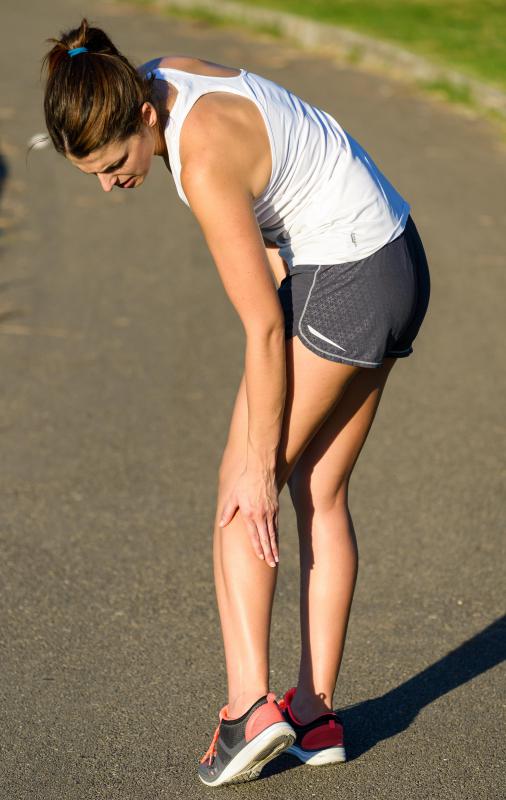At WiseGEEK, we're committed to delivering accurate, trustworthy information. Our expert-authored content is rigorously fact-checked and sourced from credible authorities. Discover how we uphold the highest standards in providing you with reliable knowledge.
What are the Different Phases of a Running Gait?
The different phases of a running gait are the swing phase and the stance phase. Each of these phases describes what a person’s foot is doing during that portion of the running gait. It may also be helpful to add in a third subphase: the float phase. Podiatrists and other scientists who study a person’s walking and running gait can use the information gathered to find and correct running problems. In addition, shoe companies can also use this information to provide runners with the appropriate shoe in order to help prevent injuries.
The swing phase of a a running gait occurs when the foot is swinging forward to meet the ground. Often, it starts when the toe leaves the ground and ends when the heel touches the ground in front of the person. The stance phase occurs between the time the heel touches the ground and continues until the toe leaves the ground. A subphase, the float phase, occurs when neither foot is touching the ground.

The stance phase of a running gait can further be divided into three subphases: contact, midstance, and propulsion. During the contact subphase, the heel comes in contact with the ground, and the subphase continues until the entire foot comes in contact with the ground. This contact can put pounds of pressure, sometimes equal to three times a person’s body weight or more, onto the foot. After the contact subphase comes the midstance subphase. During this phase, the body leans forward and moves over the foot to prepare for the next subphase, the propulsion subphase.

A runner in the propulsion subphase of the running gait will see himself propelled forward. Immediately following this subphase is the float phase. During the propulsion subphase, the heel will leave the ground and the person is propelled forward. The subphase ends with the toe leaving the ground. The running gait will continue until the foot touches the ground again, completing the cycle.

Runners who have normal running gaits are at less risk of an injury than a person who does not have a normal gait. The normal gait allows for the body to properly handle the forces of running. If the gait is abnormal, the forces are not absorbed and dissipated properly and injury can result. In order to help correct an abnormal gait, manufacturers have developed shoes with different supports to help correct it. That way, even a person with an abnormal gait can enjoy the benefits of a proper running gait.
AS FEATURED ON:
AS FEATURED ON:
















Discussion Comments
I've heard of the float phase of running before, but I can't get a clear mental picture of a point when neither of my feet is touching the ground. Does this occur only at certain speeds, or is it always the case with anyone who is running, and I just don't understand it very well?
Post your comments